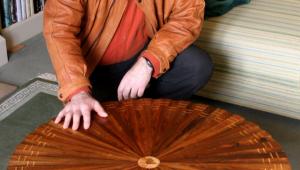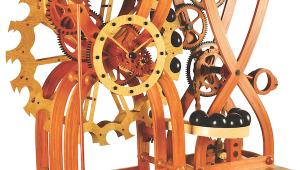A countryside craft – the importance of hedgelaying
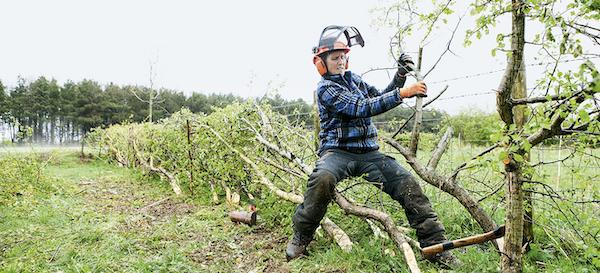
Hedgelaying has been defined as ‘the management of hedgerows by partially cutting through the stems, laying them over and weaving together to produce a thick, living barrier, which re-grows from the base’. We know that people in Britain’s distant past employed hazel wood to make hurdles and wattle fencing (photos 1 & 2), but no evidence remains of any hedgelaying from that time. In fact, the first detailed account of this activity is by John Fitzherbert, author of The Book of Husbandry – the first agricultural manual published in England – which appeared in 1523.
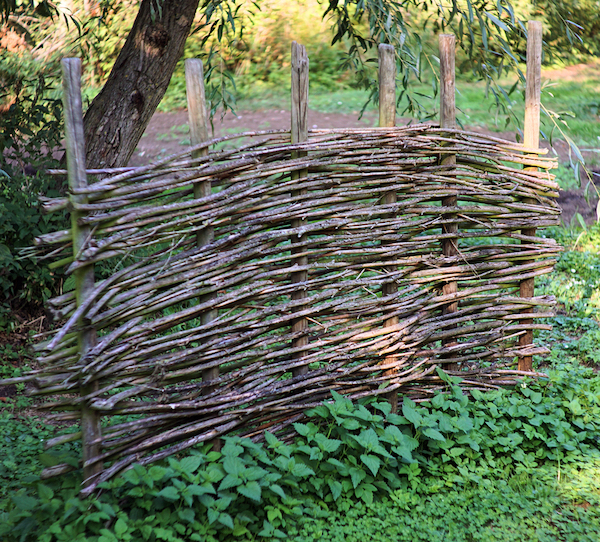

In 1652, Gervase Markham (photo 3) refers to different methods of hedgelaying, and in 1757, Thomas Hale, author of A Compleat Body of Husbandry (photo 4), is first to mention the use of stakes in this connection. However, what might reasonably be called different ‘styles’ only appeared towards the end of the 19th century.


The National Hedgelaying Society (NHLS)
World War I seriously impacted on agriculture in general, and shortage of labour and demand for food combined to eliminate many of the refinements of land-management. Technology also played its part, as barbed wire (photo 5) – invented in the USA during the 1880s – allowed large spaces to be enclosed more economically, and flails mounted on tractors allowed hedge growth to be controlled quickly and easily. This trend only increased after World War II, with bigger fields and fewer hedges significantly reducing the wildlife to which they’d previously been a haven.
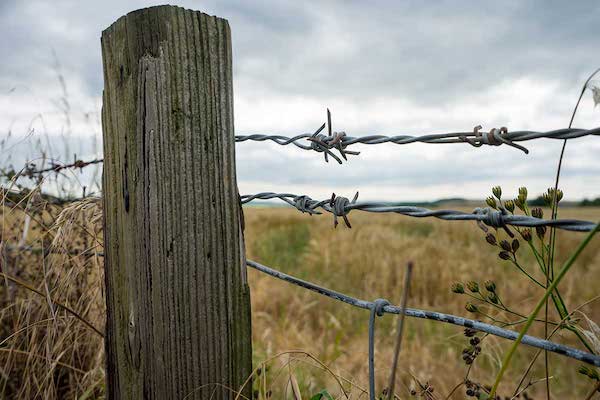
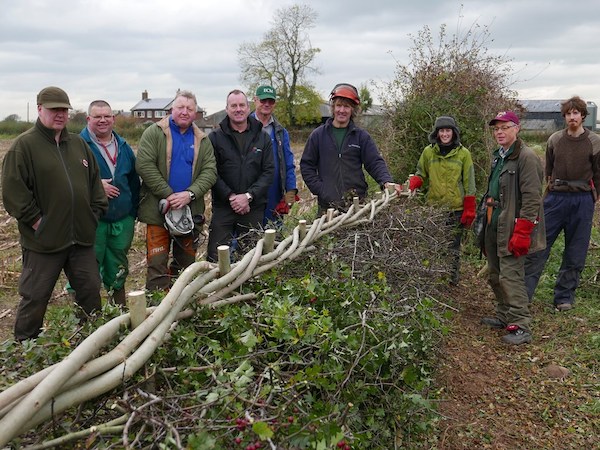
Fortunately, a few observant and far-sighted individuals saw in this both a danger and a challenge, and in 1978 formed the National Hedgelaying Society (NHLS) (photos 7 & 8). It claims to be the only charity devoted to the promotion of traditional hedgelaying, and the management of the countryside in ways beneficial to it and its wildlife.

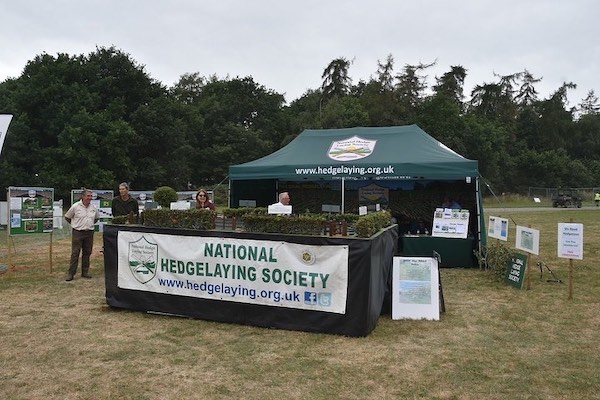
Which season is best?
Hedges offer animals the food, refuge and corridors for movement so valuable to them, but any neglect can deny them these, as they can rapidly become overgrown, taller, and in time, collapse. Equally destructive, though, is over-management, usually by trimming back hard to the same height each year. This degrades the hedge, hollowing it at the base, and leaves wildlife little shelter. Good management, by contrast, promotes gradual rejuvenation from the base, and at a rate that gives blossoms and berries time to form.
Winter is the best season for hedgelaying, as there’s less foliage to cut, and no new nests to disturb. Remarkably, hedges are home to no less than 80% of woodland birds in this country, 50% of mammals, and 30% of butterflies, and these statistics certainly earn them the official protection they enjoy.

Clearing away any debris is the first task in hedgelaying, after which the process of shaping can begin. This is achieved by cutting each branch at its base using an axe or billhook (photo 9), and bending it over to the angle suited to the particular design, or style. The part of the branch that isn’t bent is called the ‘heel’, and sawn off at ground level. Once all the branches are cut, the hedge is condensed and levelled-off with stakes and binders, usually of hazel wood.
Hedgelaying entails strong, physical effort over a sustained period (photo 10). A good deal of the work is carried out with a chainsaw (photo 11), so layers wear a helmet along with ear-defenders and either a visor or protective glasses. They also don strong boots, protective jacket, trousers and thick gloves (photo 12). Some carry a first-aid box to treat small cuts.
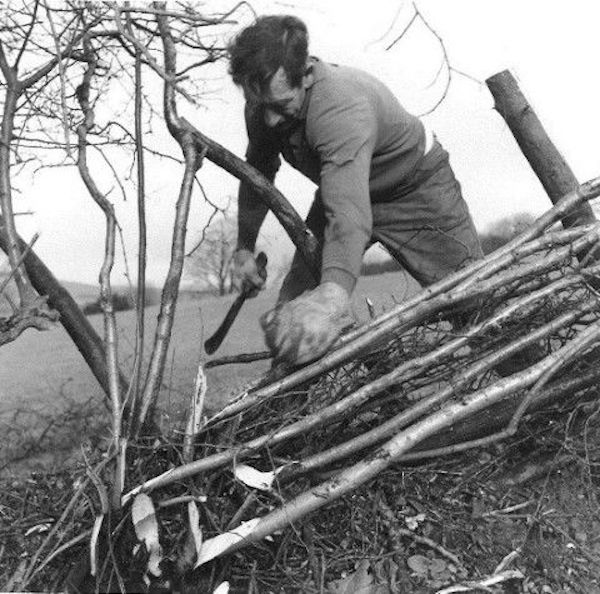
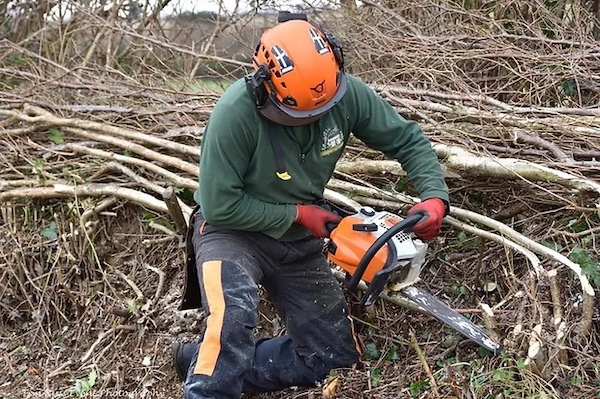
LANTRA awards
The NHLS is made up entirely of volunteers, having no paid staff, and being wholly reliant on members’ subscriptions, and sponsorship. It offers training and assessment in hedgerow management, which takes the form of three LANTRA – Land-based Training and Qualifications – approved awards.
1) The initial – bronze – award is for the ‘competent’ level;
2) The second – silver – for the ‘proficient’ one;
3) And the last – ‘advanced’ – merits the gold.
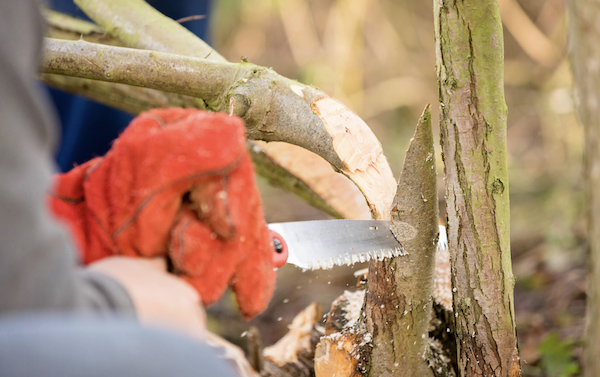

These are intended to encourage and maintain the highest standards, and details are offered at [email protected], along with fact sheets on nine popular styles, which go by the following names: Brecon; Cheshire; Derbyshire; Devon; Dorset; Lancashire and Westmoreland; Midland; North Somerset; and Yorkshire.
* Derbyshire style – entails the brush – which is the bushiest growth – being located on the side of the hedge next to the livestock. Vertical stakes made of sawn timber are fixed in the ground at intervals from 24-30in. The laid stems – called ‘pleachers’ – are woven behind and in front of these stakes. The finished hedge normally stands 3ft 6in to 4ft high.
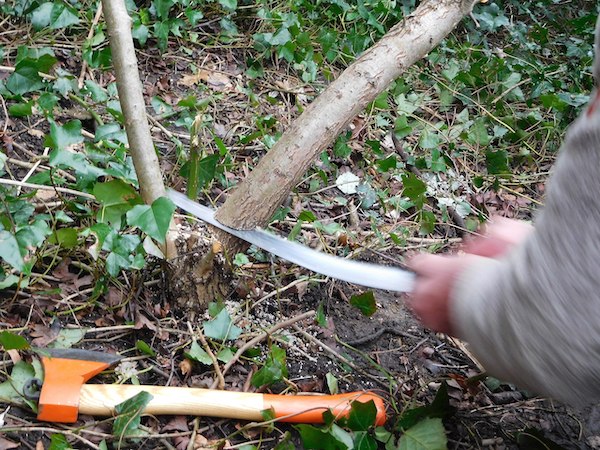

* Devon style – sets hedges on top of a bank. The pleachers are tightly woven, and secured with thin sticks – known as ‘bonds’. The completed hedge is half-barrel shape, and fairly low, at 2ft 6in to 3ft.
* Lancashire and Westmoreland style – has to produce hedges that are well-maintained in order to keep out cattle and sheep. Stakes are frequent, being placed only about 18in apart, and the finished hedge is square cut.
* Midland style – is tall, at about 4ft 6in, and adopted to restrain large animals, including horses. These would be on the thick ‘brush’ side, usually with a crop growing on the other, which is called the ‘face’ or ‘plough’ side.
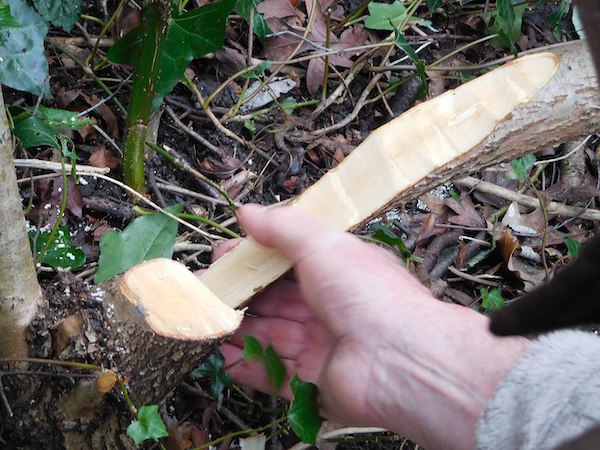
* Welsh style – features a double brush with stakes at a low angle – of about 35° – to the ground. Dead wood is employed in order to stop the re-growth being eaten by stock.
* Yorkshire style – allows a very thin hedge to be laid, as it’s normally resorted-to when the fields it divides are both arable – i.e for crops, not livestock. However, a period of about five years free from the risk of grazing is needed to guarantee complete recuperation.
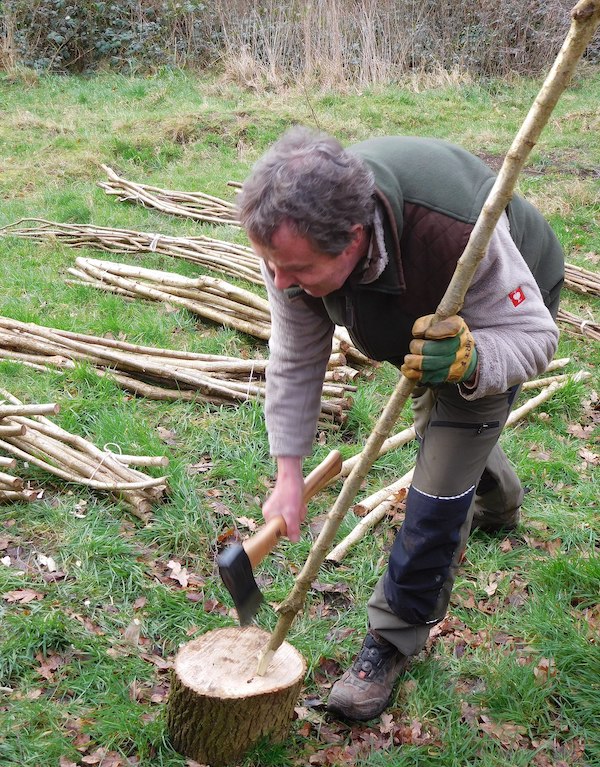
An ability to appreciate the quality of each of these styles – and the other main ones – requires an eye for fine distinctions.
100 of the best hedgelayers
The national championships were recently held near Wallingford, in Oxfordshire, with 100 of the best hedgelayers vying for the honours in nine categories – or styles – of some 30 in existence (photos 18, 19 & 20). They were given five hours to prepare a 10m stretch of hedge, after which several expert judges assessed their efforts. The entrants managed to balance earnest competitiveness with genuine respect and admiration for rivals’ performances. Fittingly, many of the trophies awarded took the form of a billhook mounted on a plinth.
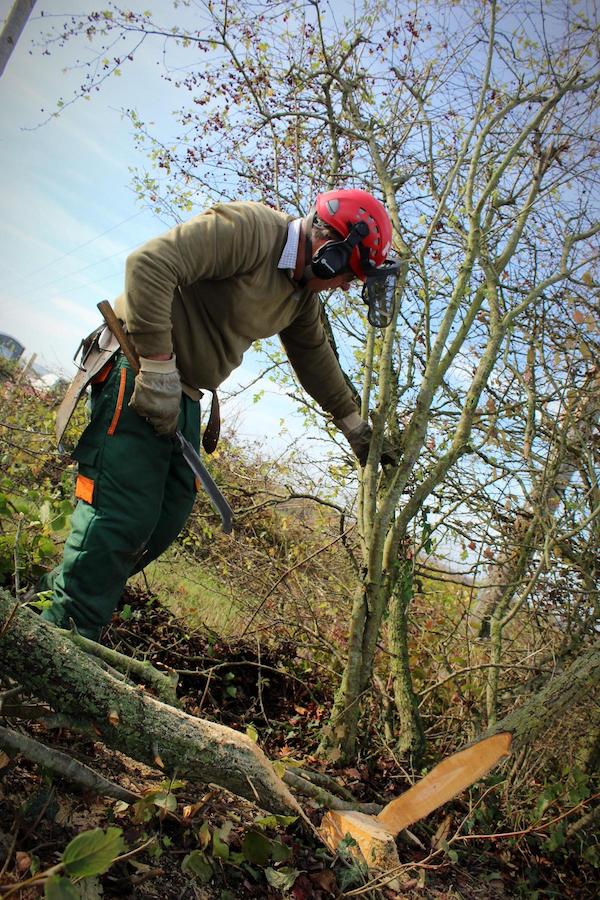

Finally, hedges have an increasingly important role to play in the fight against pollution. To their credit, more and more farmers are employing them to reduce, for example, run-off from fields of water contaminated by industrial processes near rivers, or in some cases, even occurring on the farms themselves.
National Championships
The 43rd National Hedgelaying Society Championships took place on 29 October 2022 at Clacks Farm, Wallingford with the overall, Colin Clutterbuck, being awarded the Supreme Champion award – for cutting in the North Somerset style (photo 20). Reserve place was scooped up by Malcolm Johnson – cutting in the Midland Style. A full and official results list of all classes is posted on the website – www.hedgelaying.org.uk – for those interested.

The 2023 event is due to take place on 28 October in a bid to continue to preserve and maintain traditional hedgelaying skills as well as encouraging the sympathetic management of hedgerows for wildlife and landscape.
- Log in or register to post comments

